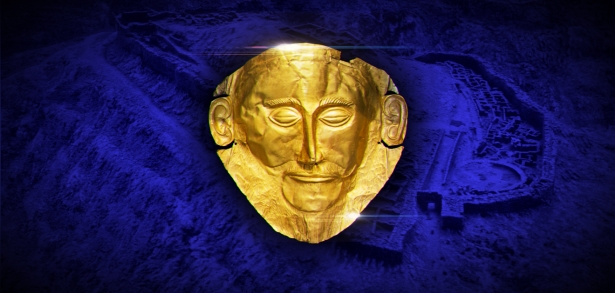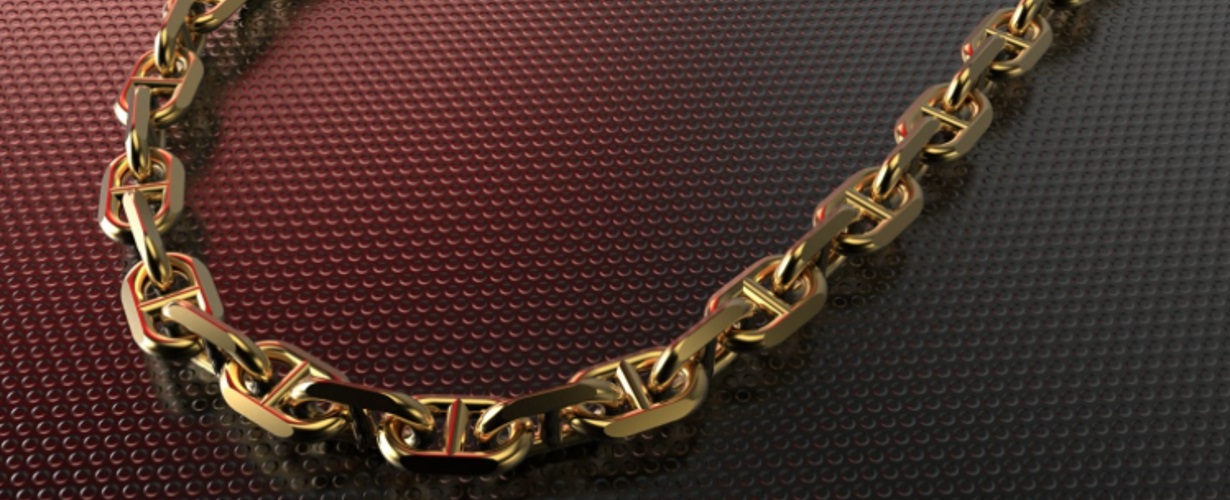
How gold chains are made
The jewelry chain-making is a complex and interesting process. Modern mechanized technology allows creating spectacular and eye-catching jewelry with different weaving patterns.
We explain the gold chain-making process.
Creating a workpiece
In its pure form, gold is too soft and unsuitable for making jewelry. In order to create necklace chains, different alloys of gold with silver, copper and zinc are needed. In such a way, the product’s solidity and durability are enhanced.
By changing the proportions of the metal added to the alloy, a certain color and a degree of fineness are obtained.
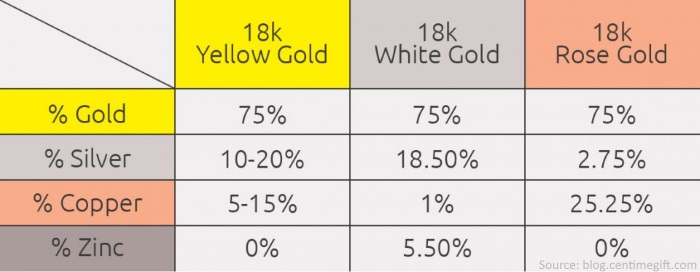
The table shows the composition of the alloys required to obtain yellow, white and rose gold.
As a result of smelting, a precious piece of semi-finished ingot is obtained: a golden rod with a diameter of nearly 10 millimeters.
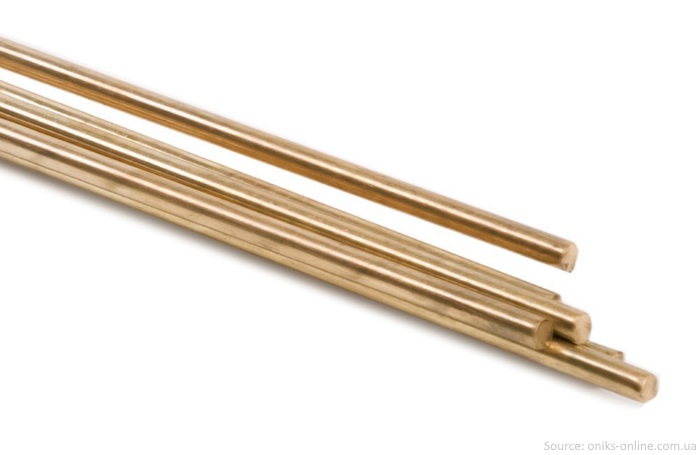
In the photo: the rod is subsequently rolled in a wire with a diameter of 1 millimeter that has high ductility and plasticity.
However, such a gold wire is not thin enough for the manufacture of necklace chains. Its diameter gets reduced to 0,15 millimeter using a special industrial equipment. The gold wire is pulled through high-speed narrow diamond nozzles, the metal fiber becomes thinner as a result.
Later the thinnest gold thread undergoes heat treatment, becoming even more plastic, followed by an ultrasonic cleaning.
Chain-making weaving patterns
The "chain-stitching" process is done by special machines that produce a certain type of weaving. A golden wire is passed through a mechanical device that generates beautiful patterns from its fragments, interconnecting the finished parts of the chain. A professional device can create a chain of 600 links in 1 minute.
There are various chain-weaving patterns. The chain of "anchor" weaving is considered the most popular one.
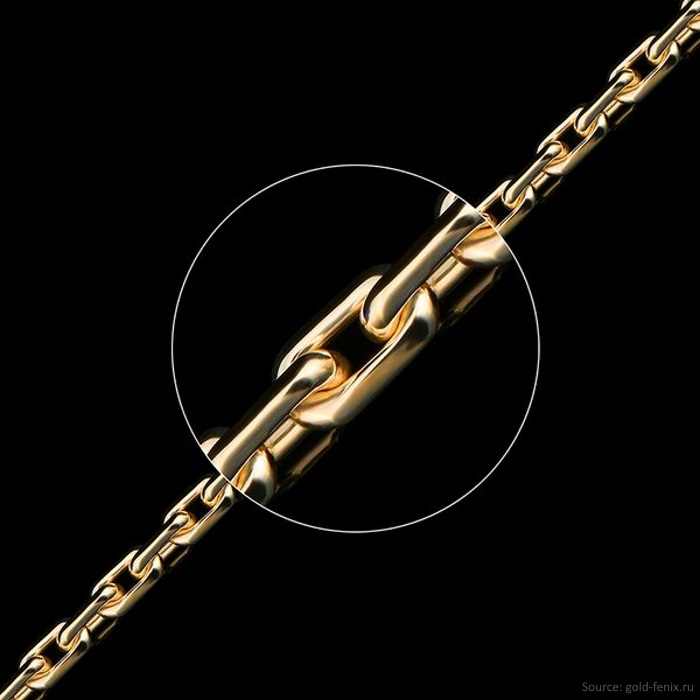
The "Bismarck" chain weaving is the most durable to date:
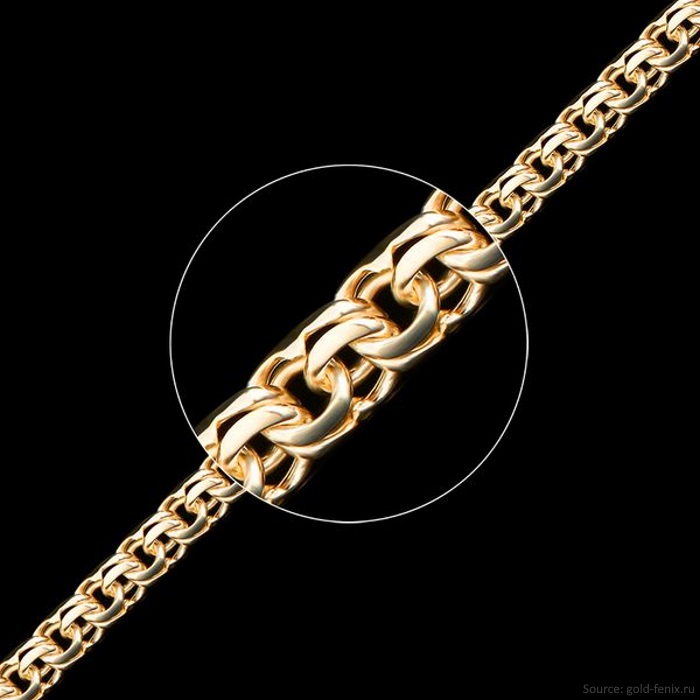
The "tortoise" chain is of the highest demand among men:
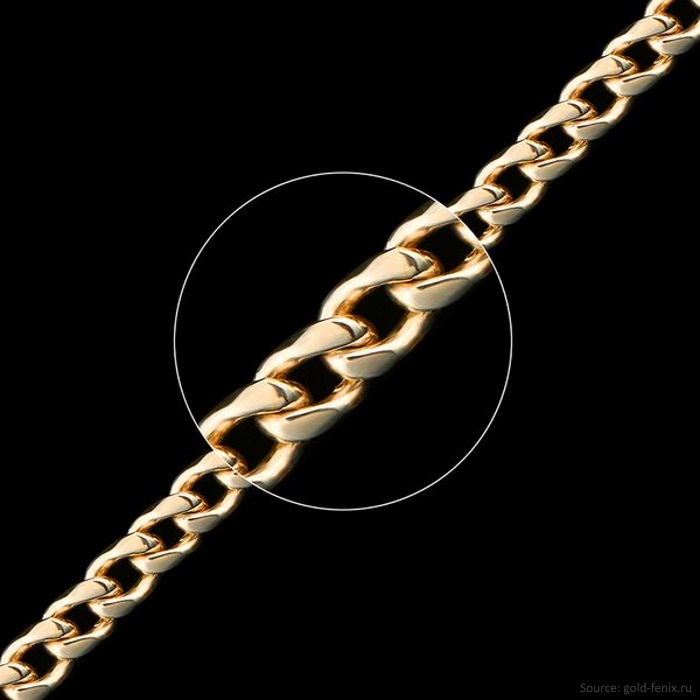
Final steps
When the weaving process is completed, the product gets covered with a special gold-containing powder. The chain is placed in a furnace heated to 900 degrees, where the solder powder melts, solidifying each element.
Afterwards, the gold chain is cut into pieces of the required length and polished by a diamond-coated metal polishing machine.
Clasp fastening is the next step in the jewelry manufacturing process.
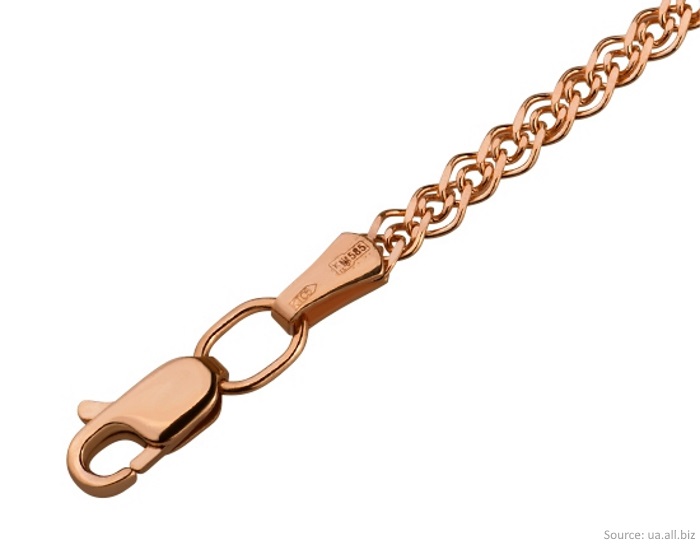
In the photo: next to the clasp, a small gold plate or ringlet is fastened, on which the fineness of a precious metal is usually marked.
The final step of the gold chain creation is the chain’s cleaning process in a rhodium-containing chemical solution that adds extra shine, preventing allergic reactions to the composition of the gold alloy. The finished piece of jewelry is then sent to jewelry stores and boutiques.
The gold necklace was the first piece of jewelry ever worn by a human. Golden jewelry strikes with its beauty and durability, it is often inherited and presented as a valuable gift. Nowadays, people invest in gold to create a reliable foundation for their Financial Security. Gold is the most reliable and liquid asset that helps preserving and accumulating personal capital.
Read also: The Mystery of Blue Gold


